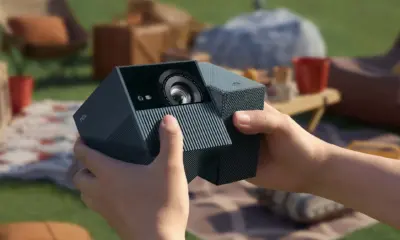News
TCL Launches World’s First SQD-Mini LED TV with Record-Breaking Brightness and Color
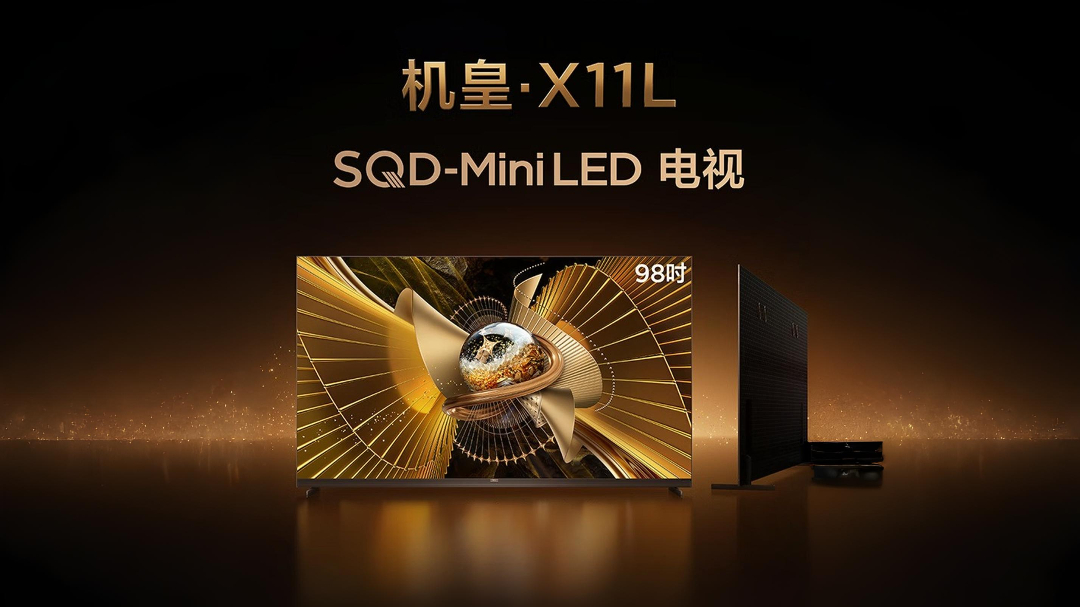
TCL has launched its flagship X11L series alongside Q9M and Q10M Ultra at the 2025 Mini LED TV Autumn Launch Event in China. The company describes it as the new “king of TVs” and the first to feature its proprietary SQD-Mini LED display technology. This panel promises purer color output and higher backlight precision compared to conventional RGB-Mini LED solutions.
The X11L series is available in three sizes. The 75-inch model is priced at 19,999 yuan ($2,800), the 85-inch version costs 34,999 yuan ($4,900) and features 14,400 local dimming zones, while the top-end 98-inch model comes in at 59,999 yuan (~$8,400) and boasts 20,736 dimming zones.
TCL X11L Mini LED TV Specifications
The 98-inch variant features a 4K panel with a peak brightness of 10,000 nits. It supports HDR formats including Dolby Vision, HDR10+, HDR10, HLG, and IMAX Enhanced. The display covers 100% of the BT.2020 color gamut and delivers professional-grade color accuracy with a ΔE value of less than 0.99. TCL uses a “butterfly wing” LCD layer with low-reflection coatings to improve contrast and viewing angles while keeping the body thickness at just 2 cm.
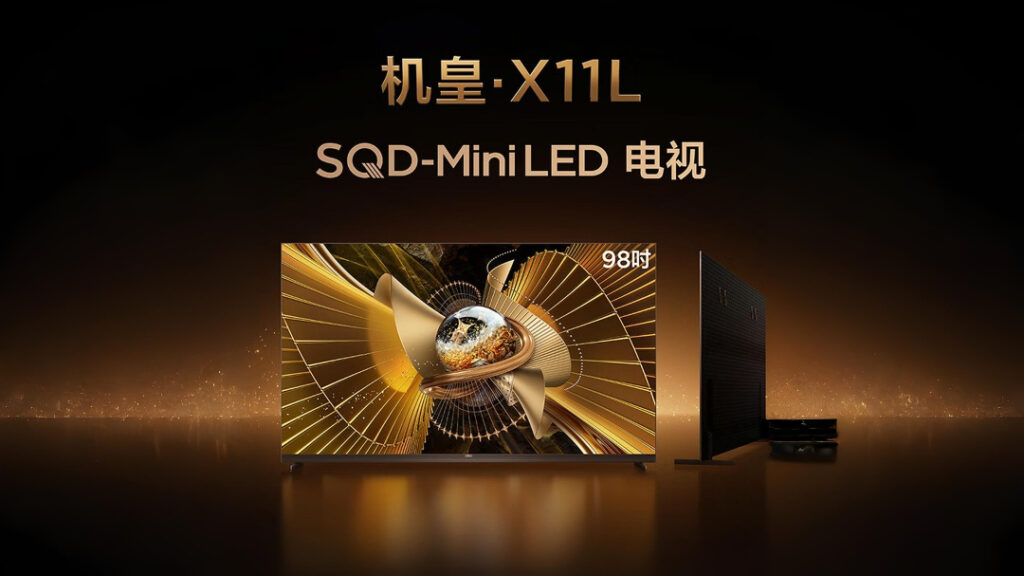
TCL has equipped the X11L with the MediaTek 9655+ chipset, paired with 4GB RAM and 128GB storage. The TV supports 4K 144Hz input through four HDMI 2.1 full-bandwidth ports. Other connectivity options include USB 3.0, USB 2.0, LAN, AV-in, RF input, and optical audio out. Wi-Fi 6 is built-in.
For audio, it uses a custom speaker system tuned by Bang & Olufsen. It includes dual woofers, a center channel, and front-firing drivers designed for clean and dynamic sound.
The X11L runs TCL’s Lingkong System 3.0, which features a clean card-style UI, no boot ads, and support for AI voice control, NAS media playback, and education tools. Each unit ships with a magnetic wall mount and tabletop stand.
In related news, we recently explored TCL’s strategy to dominate the Indian TV market in 2025. Check it out as well.
Featured
Best TCL Gaming TVs You Can Buy Right Now

In 2025, TCL aggressively redefined the gaming TV market by upgrading its entire “K-Series” lineup to Mini-LED technology and native 144Hz refresh rates. Gamers, especially those with a console, turn to TVs for their gaming needs. TCL has something for everyone, and some of the most competitive gaming displays available. Often, some of them make mistakes while selecting a model. To clear that confusion for you, here is the list of the best TCL gaming TVs this year, categorized by performance and value for your convenience.
1. TCL QM8K
–The “No Compromise” Flagship
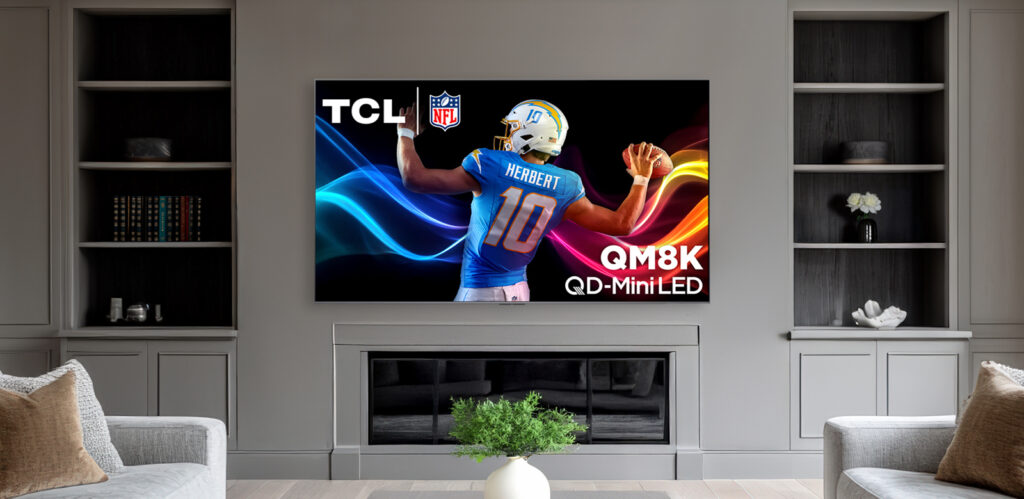
The TCL QM8K is the undisputed king of TCL’s 2025 lineup and arguably the best high-end gaming TV for the money. For what it offers, the TV takes on some of the high-end models on the market, including Samsung’s NEO QLEDs and Sony’s Mini-LEDs, while exceeding them in brightness.
The astounding peak brightness, often exceeding 5,000 nits and over 5,000 local dimming zones, makes the TV a standout in the sea of options. This allows for ink-deep blacks that rival OLEDs, but with significantly higher brightness that makes HDR highlights in games like Cyberpunk 2077 or Call of Duty pop, even in bright rooms.
For gamers, you get a 144Hz native refresh rate, low input lag, Game Accelerator 240, and AMD FreeSync Premium Pro. The TCL QM8K TV starts at $1,500 and goes up to $4,000 for the 98-inch model. You can buy it here.
2. TCL QM7K
–The Best Value
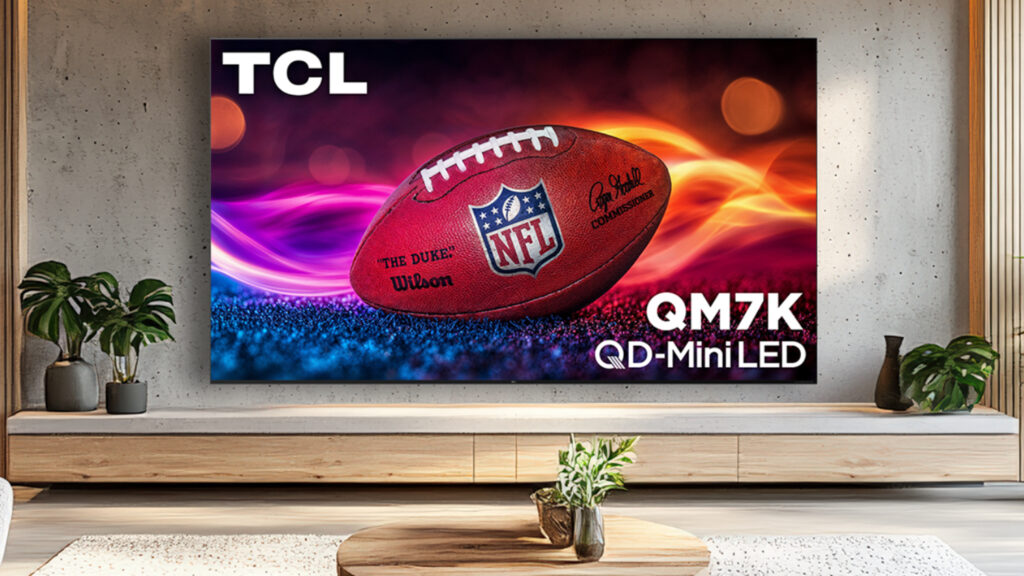
If you think the QM8K is an overkill for your living room, the TCL QM7K is the smart alternative. The QM7K brings premium specs down to a mid-range price. While it’s nearly identical to the QM8K, the dimming zones are fewer, i.e., ~2,500 zones, which is still very remarkable.
It offers a native 144Hz panel, VRR support, and up to 3,000 nits HDR brightness. It automatically detects consoles to switch into Auto Game Mode (ALLM), ensuring you always get the lowest latency without diving into menus. There’s Motion Rate 480 with MEMC Frame Insertion and Game Accelerator 288. For audio, you get audio by BANG & OLUFSEN and Dolby Atmos. You can get the TCL QM7K for a starting price of $750.
3. TCL QM6K
–The Best Gaming TV of 2025
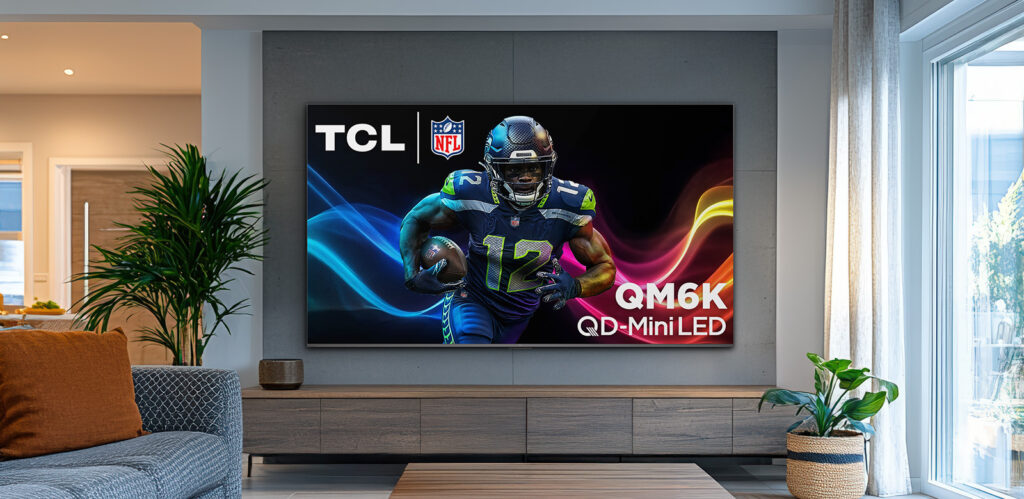
The biggest surprise of 2025 is the TCL QM6K. Historically, TCL’s “6-Series” or “Q6” lines were standard LED TVs, often limited to 60Hz. The new QM6K changes everything by introducing Mini-LED backlighting and a native 144Hz panel to the budget tier. It’s not that often we see a budget TV with true 120Hz/144Hz support, let alone Mini-LED. This makes it the absolute best TV for PS5 and Xbox Series X owners.
For gamers, you get a 144Hz native refresh rate, so all your games can run at 120Hz. Additionally, you get Game Accelerator 288, Motion Rate 480 with MEMC Frame Insertion. The TV also gets you Dolby Vision IQ for enhanced picture quality, Dolby Atmos, and DTS Virtual: X. You can purchase the TCL QM6K at a starting price of $530.
4. TCL T7
–The Best Mid-Range Gaming TV
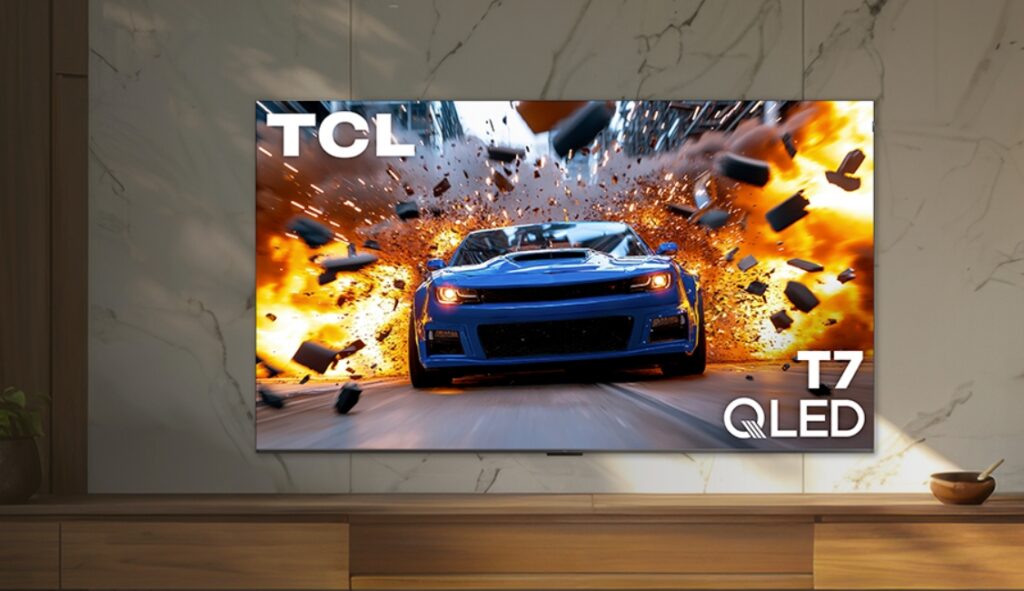
If you have a starting budget of under $600, the TCL T7 series is the one to go for. This is, in fact, an official partner of the Call of Duty game. It is the brand’s new lineup and offers a QLED-Quantum Dot Technology and a 4K UHD panel. The panel offers a 120Hz high refresh rate and a 144Hz variable refresh rate (65-inch model and above).
All the important gaming features like the Game Accelerator 288, Motion Rate 480 with MEMC Frame Insertion, and Auto Game Mode (ALLM) are accounted for. Rest, the TCL T7 line offers HDR10+ with Dolby Vision, HDR10+, Onkyo 2.1 speaker system, and Dolby Atmos audio. The TCL T7 lineup starts at $600, and you can buy it from here.
5. TCL Q7
–Best Budget Gaming TV

The TCL Q7 is a right pick for those on a fixed budget, but still want a premium experience. The TV offers a 4K UHD panel with QLED-Quantum Dot Technology and high brightness PRO LED backlighting with up to 1,000 peak nits. It also offers a Full Array Pro Local Dimming with up to 200+ Dimming Zones.
Gamers will be happy to learn that the TCL Q7 offers a 144Hz variable refresh rate, Motion Rate 480 with MEMC Frame Insertion, and Auto Game Mode (ALLM) with AMD FreeSync Premium Pro. Besides the hardware, the Q7 is also quite aesthetic with FullView Metal Bezel-less Design, so it should be good to look at in your living room. The TCL Q7 starts at $400, and you can buy the TV from here.
What to Look for in a TCL TV While Buying for Gaming?
When buying a TV for your gaming needs, you need to check for certain features that will enhance the experience further. These include variable refresh rate, ALLM, Game Accelerator, and MEMC.
- ALLM (Auto Low Latency Mode): It ensures the TV automatically removes processing to minimize input lag the moment you launch a game on PS5 or Xbox.
- Variable Refresh Rate (VRR): This is a gaming-focused feature that allows the TV to dynamically adjust its refresh rate to match the fluctuating frame rate of a gaming console or PC.
- MEMC: This is a frame interpolation technique where the TV’s processor creates artificial “in-between” frames. MEMC inserts extra frames to match the TV’s 120Hz capability, making the movement appear fluid and less jittery.
- Game Accelerator: This artificially doubles the refresh rate for gaming, allowing smoother motion. It typically enables a 120Hz/144Hz panel to handle 240Hz signals (Game Accelerator 240)
Comparison of Best TCL Gaming TVs
| Model | Panel Type | Native Refresh | VRR Support | Local Dimming? |
|---|---|---|---|---|
| QM8K | QD-Mini LED | 144Hz | Yes (FreeSync Pro) | Yes (5000+ zones) |
| QM7K | QD-Mini LED | 144Hz | Yes (FreeSync Pro) | Yes (1500+ zones) |
| QM6K | QD-Mini LED | 144Hz | Yes | Yes (500 zones) |
| TCL T7 | QLED – Quantum Dot | 120Hz | Yes (144Hz) | No |
| TCL Q7 | QLED – Quantum Dot | 120Hz | Yes | Yes |
Conclusion
For 2025, the TCL QM7K stands out as the best choice for the vast majority of gamers, offering a perfect balance of high-end Mini-LED performance and value. For those who want the absolute best HDR experience with blinding highlights, the TCL QM8K is the one to beat. Perhaps most impressively, the QM6K has completely redefined the budget category; if you have a limited budget but demand 120Hz performance for your console, the QM6K is arguably the only TV you should consider.
For those wanting a gaming TV and don’t have a big budget, the TCL T7 hits the right spot. It is a perfect choice for casual gamers, with all the notable gaming features accounted for. Lastly, the TCL Q7 is for those wanting a budget model with value-for-money hardware.
In related news, we recently covered the best TCL TVs under $500 you can buy in 2025. You can check it out as well.
News
TCL to Showcase Next-Gen Displays and AI-Powered Product Lineup at CES 2026
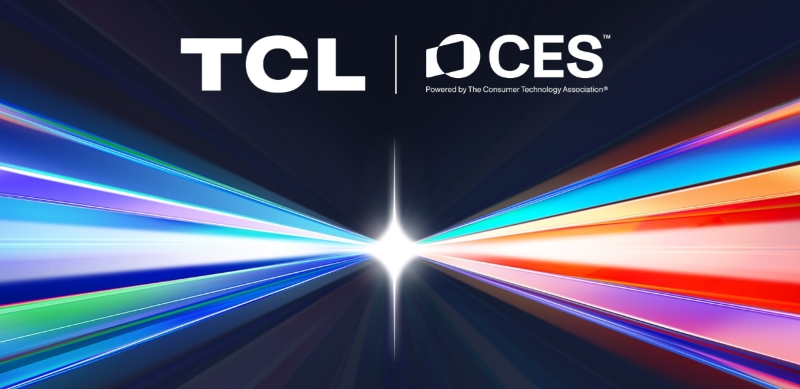
TCL has confirmed its participation at CES 2026 with a major showcase focused on advanced display technology and a wide range of AI-powered products. The company will occupy Booth #18604 at the Las Vegas Convention Center’s Central Hall from January 6 to 9.
TCL plans to highlight its latest breakthroughs in display innovation, including its new SQD-Mini LED technology. The technology delivers five key improvements: wide color gamut for all scenarios, no color crosstalk, higher peak brightness, more local dimming zones, and a slimmer profile. TCL will display these panels across TVs, monitors, mobile devices, and wearables.

The company will also debut new NXTPAPER smartphones and enote tablets with eye-care features. Visitors can expect a hands-on look at TCL’s latest AR glasses, designed to enhance personal entertainment and productivity.
TCL’s presence at CES will extend beyond displays. The company will introduce a complete lineup of AI-powered smart home devices, including air conditioners, refrigerators, washing machines, and smart locks. TCL will also present AI-powered TVs, projectors, and AR glasses that support personalized content and smarter interaction.
The company aims to show how its AI systems can support daily life through a connected ecosystem. Its Human-Vehicle-Home strategy will be on display through mobile devices, tablets, and smart integration solutions that combine intelligent productivity with mobility and home automation.
TCL’s booth will act as a live demonstration of how its display and AI technologies work together to shape future living and viewing experiences. The company has stated that more product details will be revealed during the event.
In related news, Apple’s upcoming foldable iPhone could drive significant growth for TCL CSOT, while TCL has also launched its PlayCube, A1S, and C1 portable projectors in the UK market.
News
Apple’s Foldable iPhone Could Fuel Big Gains for TCL CSOT

Apple is expected to enter the foldable smartphone market in 2026, and its arrival could significantly impact the display supply chain. According to a new report from Counterpoint Research, global shipments of foldable smartphone panels are forecast to grow 46% year-on-year, with Apple’s panel procurement plans playing a major role in driving that increase.
While Samsung Display is projected to lead with a 57% market share, TCL CSOT is quietly emerging as one of the fastest-growing players in the foldable panel segment. Counterpoint estimates that TCL CSOT will see a 47% year-on-year growth in foldable panel shipments in 2026, placing it ahead of several competitors in terms of momentum.
The report highlights a shift in consumer preferences toward book-style foldable devices with large, inward-folding displays. These designs are gaining traction in both global and Chinese markets, where buyers are prioritizing screen size and productivity features over compact form factors. Samsung’s Galaxy Z Fold 7 has already outsold the Flip model in early sales during the second half of 2025, underlining the trend.
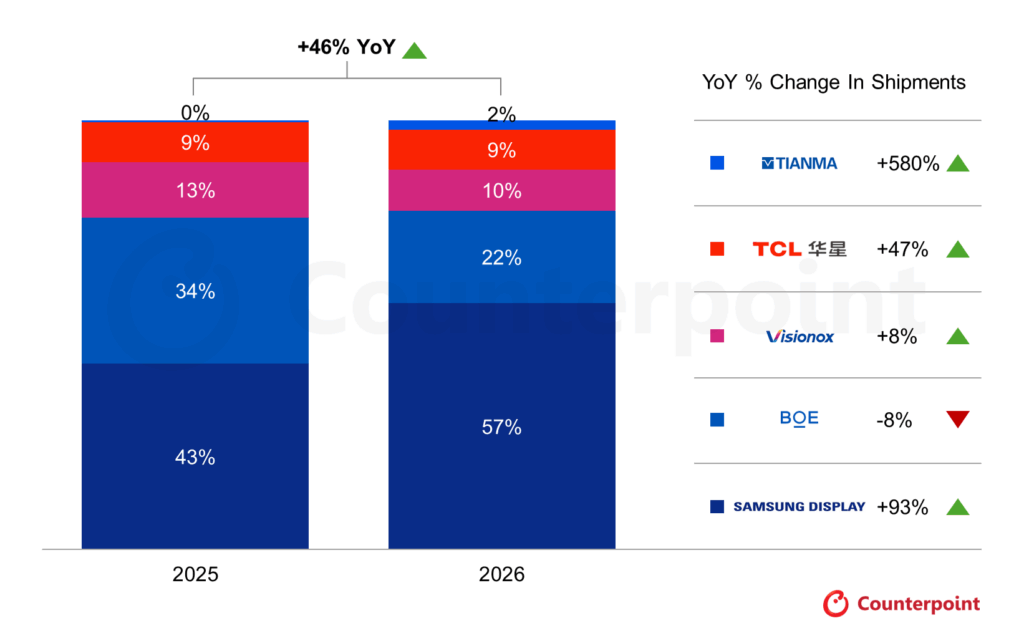
Panel makers are expected to post uneven results next year. BOE may experience an 8% decline, while Visionox is projected to grow 8%. Tianma is forecast to achieve the highest year-on-year surge at 580%, though from a smaller base. TCL CSOT’s 47% growth positions it as a key player poised to benefit from rising demand and higher average selling prices.
Counterpoint also expects foldable smartphone shipments to grow 14% in 2025 and 38% in 2026. As Apple prepares to enter the market and push foldables into the mainstream, TCL CSOT appears well-placed to expand its presence in the global foldable display market.
In related news, TCL CSOT is supplying the display panel for AOC AGON’s 1000Hz gaming monitor, the AGP277QK, while TCL has also launched the PlayCube, A1S, and C1 portable projectors in the UK.





